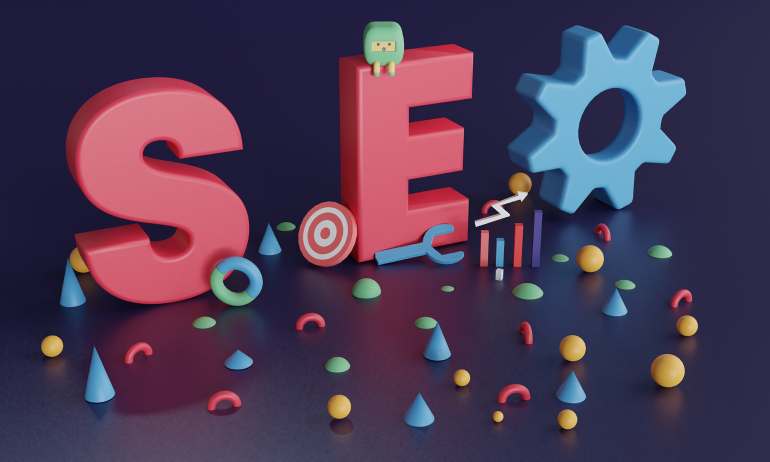What’s the Point of a Beautiful Website No One Finds?
You’ve spent hours perfecting the layout, selecting just the right font pairing, and curating a stunning visual identity. But if no one visits your website, all that effort loses impact.
Today’s websites need more than just style—they need structure, strategy, and search optimization baked into every design choice.
The challenge? Most designers prioritize aesthetics, while SEO experts focus on text and structure. The real win lies in blending both worlds—creating a seamless user experience that looks great and ranks well on search engines.
This blog shows you exactly how to balance design and SEO so your website is both beautiful and visible.

🔍 Why Design and SEO Must Work Together
A website that ranks well but looks outdated loses trust. A site that stuns visually but loads slow or lacks structure won’t perform in search.
🧠 Design impacts performance, readability, and user signals
🧠 SEO ensures your content is crawlable, indexable, and discoverable
🧠 UX influences dwell time, bounce rate, and conversions
🧠 Visual hierarchy helps guide both users and search engines
Great websites are built with both users and search engines in mind—not one or the other.
🧱 1. Start with a Clean, Crawlable Structure
Your website’s structure is the backbone of SEO—and a guide for design.
🔹 Use semantic HTML tags (like <header>, <main>, <footer>)
🔹 Create a clear hierarchy with headings (H1 > H2 > H3)
🔹 Keep navigation shallow—no more than 3 clicks from homepage
🔹 Use breadcrumb links for deeper content
A clear structure helps Google index your site—and users navigate it easily.
✏️ 2. Design for Speed and Performance
Beautiful design means nothing if it takes 5+ seconds to load.
⚡ Compress and lazy-load images
⚡ Use modern formats like WebP
⚡ Minimize use of large videos and animations above the fold
⚡ Use system fonts or load Google Fonts asynchronously
⚡ Avoid bloated page builders or excessive plugins
Fast-loading pages don’t just improve UX—they boost rankings and reduce bounce rates.
🖋 3. Blend Readability with Visual Hierarchy
Design should make content easy to read, scan, and engage with.
📚 Use legible fonts and high-contrast text
📚 Break content into smaller chunks with headings
📚 Highlight keywords naturally—don’t force them
📚 Use bullet points, icons, or visuals to improve scannability
📚 Keep paragraphs short (2–4 lines max)
Google prioritizes user experience—and so should you.
🧩 4. Optimize Images Without Sacrificing Aesthetics
Images bring design to life—but also affect speed and SEO.
🖼 Compress large images with tools like TinyPNG
🖼 Use descriptive file names (e.g., modern-web-design-hero.jpg)
🖼 Add alt text for every image—good for SEO and accessibility
🖼 Use SVGs for icons and UI elements
🖼 Serve responsive images using srcset
Image optimization is one of the easiest ways to balance form and function.
📲 5. Make It Fully Responsive—Across Devices
Mobile-friendliness is both a design and SEO requirement.
📱 Use flexible grids and fluid containers
📱 Design with a mobile-first mindset
📱 Keep tap targets large and easy to hit
📱 Avoid popups or interstitials that block content
📱 Test your site on multiple devices before launch
Responsive design isn’t optional—it’s Google’s baseline for ranking.
🧰 6. Use SEO Plugins and Tools During the Design Process
Integrate SEO into your workflow from day one.
🔧 Use tools like Yoast SEO, Rank Math, or SEOPress
🔧 Track page speed using Google PageSpeed Insights
🔧 Monitor accessibility with Lighthouse or axe
🔧 Generate a sitemap and submit it via Google Search Console
🔧 Use Figma’s SEO-ready templates for structured content planning
The earlier SEO is integrated, the better your design performs.
⚠️ Common SEO-Design Mistakes to Avoid
Even well-designed sites can underperform in search. Avoid these missteps:
🚫 Using images for text (not crawlable)
🚫 Skipping H1 or using multiple H1s on a page
🚫 Not compressing or resizing media
🚫 Ignoring alt text and metadata
🚫 Prioritizing aesthetics over performance
Balance is the key—every visual choice should support usability and discoverability.
✨ Real-World Example: Redesigning for SEO + Aesthetics
A creative agency launched a gorgeous new portfolio site—but organic traffic dropped 35% post-launch.
What changed?
🎯 Added readable heading hierarchy and semantic HTML
🎯 Compressed all media and fixed mobile layout
🎯 Updated meta titles and descriptions for all pages
🎯 Switched to SEO-friendly blog template with internal linking
Within 6 weeks, the site bounced back—ranking even higher than before. Lesson learned: design isn’t finished until it works and ranks.
🧾 Final Thoughts: Search Engines Love Good Design
The next time you design a website, don’t treat SEO as an afterthought. Build it into your design decisions—from typography to page structure, from load speed to responsive flow.
When beauty meets performance, and usability meets visibility, you get a website that feels amazing and performs even better.
Design for people. Structure for search. Win both.
💬 What’s Your Approach to SEO-Focused Design?
Do you use any SEO tools during your design process? Do you design with Google in mind—or user flow first? Drop your strategy, tool stack, or questions below! 👇




7 Comments
Emily Rhodes
14 April 2025I’m definitely saving this to send to a few clients who keep asking “why does SEO matter if the site looks good?” 😂 Thanks for the ammo!
Mason Ellis
14 April 2025Yoast + WebP + semantic tags = the trifecta I swear by. Really appreciate how this post made it easy to tie visuals into performance.
Freya Wells
14 April 2025Alt text and image compression—two things that take minutes and make such a huge difference. Love the focus on real-world action here.
Oliver Brooks
14 April 2025This is the kind of guide I wish I had when I started freelancing. Blending SEO tools into Figma and the early process is a huge mindset shift.
Isla Peterson
14 April 2025Mobile-first design is everything now. It’s wild how many still treat it like an afterthought—when it’s literally part of Google’s core ranking.
Daniel Ford
14 April 2025“Structure for search. Design for people.” Might be my new design mantra. Thanks for making SEO feel less intimidating and more practical for designers.
Sophie Clarke
14 April 2025That real-world example is so relatable! We experienced a similar drop after a redesign—reworking heading tags and page speed brought us back fast.